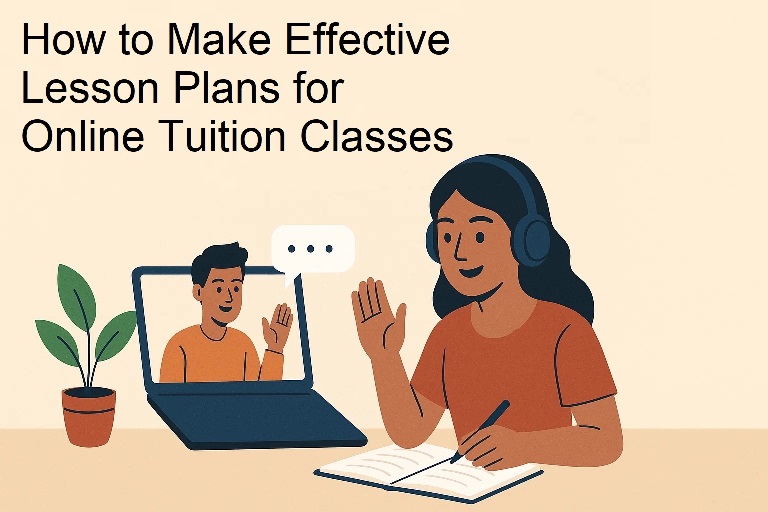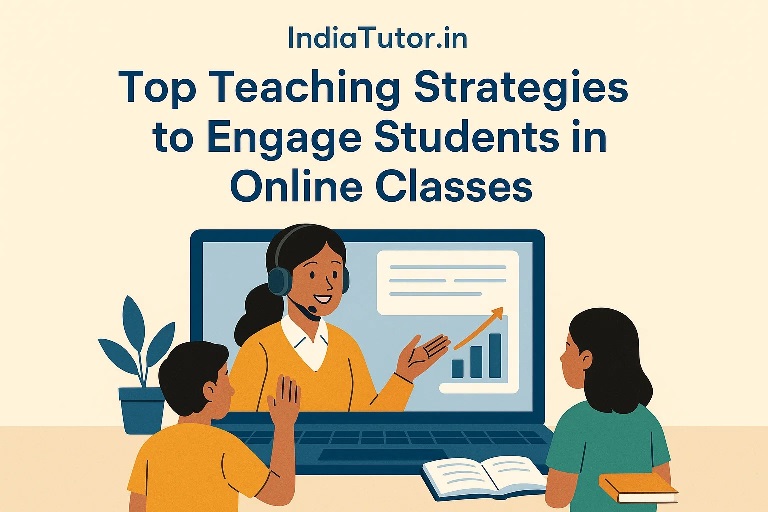As a parent and educator, one of the most common concerns I hear is this: “My child is losing confidence because they are not doing well in studies.” This is something many families across India face today. The good news is, we are living in a time where help is just a click away. Online tuition is no longer just a convenience — it’s a powerful tool that’s helping students not only improve academically, but also rebuild their self-esteem.
At IndiaTutor.in, we’ve seen many a students transform with the right online guidance. Let me share how and why this works.
A Safe, Supportive Learning Environment
Children often hesitate to ask questions in crowded classrooms. They fear judgment from peers, or they may simply not get enough attention in a room full of 30 to 40 students. In contrast, online tuition gives students the privacy and comfort of learning from their own home. They feel more at ease to express doubts, speak freely, and take their time to understand concepts. This builds confidence naturally.
In one case, a Class 6 student from Delhi, who was shy and introverted, started learning Math online with one of our tutors. Within a few weeks, she began asking more questions, sharing answers confidently, and even started enjoying a subject she once feared. Today, her class performance has improved by 25%, and more importantly, she believes in her own ability.
Personalized Attention Makes All the Difference
Every child learns differently. Some grasp quickly through visuals, others need repetition. In schools, teachers don’t always have the time to customize lessons. But in a one-on-one or small group online setting, the tutor adapts to the child’s pace and learning style.
According to a 2023 study by the National Education Alliance for Technology (NEAT) under the Ministry of Education, students who received personalized online tutoring for 3 to 6 months showed up to 35% improvement in their test scores, particularly in Math and Science.
This kind of progress boosts not just marks, but self-confidence. Students begin to realize, “I can do this.”
Flexible Learning Helps Students Feel in Control
Unlike fixed school hours, online tuition allows flexibility. Students can choose a time when they are fresh and focused. They can even revisit recorded lessons (if available), practice more through shared resources, and learn at their own pace. This sense of control reduces stress and helps students feel more responsible for their learning.
Immediate Feedback and Encouragement
In a school setup, students often wait for days to get test papers corrected. Online tutors provide instant feedback. Whether it’s solving a tricky problem or reading a paragraph aloud, the response is immediate, specific, and encouraging.
Timely positive reinforcement is key to building confidence. A child who hears, “That’s a great effort, just correct this one part,” instead of “You’re wrong,” develops a growth mindset. They become more open to learning from mistakes.
Builds Discipline and Study Habits
Online tuition follows a set schedule, and tutors often set small goals like weekly revisions or monthly assessments. These structured practices help students build a habit of regular study, which translates to improved scores over time.
In fact, a 2022 report by KPMG on digital education in India revealed that students engaged in online tutoring showed better time management and consistency in study hours than those without any additional support.
Boosting Confidence Beyond Academics
Many parents think tuition is only about better marks. But the right tutor becomes a mentor too. They help kids develop communication skills, emotional strength, and resilience. One of our Class 9 students from Bangalore, who once feared speaking in class, now gives short presentations during online lessons. Her school teacher recently complimented her improved participation in class discussions.
When a child feels heard, guided, and encouraged, it reflects in every area of life.
My Thoughts
Online tuition is more than just a solution for academic help — it’s a confidence-building journey for students. As a parent, investing in the right tutor can make a lifelong difference in your child’s attitude towards learning and self-belief.
At IndiaTutor.in, we work hard to connect families with experienced, verified Indian tutors who care deeply about each student’s progress. Whether your child needs help catching up, preparing for exams, or exploring a new subject, we’re here to support that journey — with care, consistency, and commitment.
If you’re considering online tuition for your child, start with a trial class. Often, that one class is enough to light a spark of confidence in your child.
By Nidhi Mehta, Founder – IndiaTutor.in





